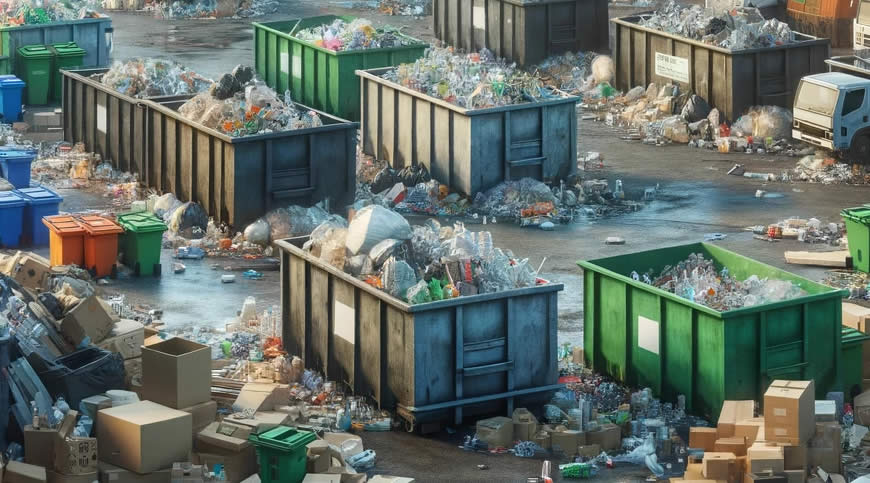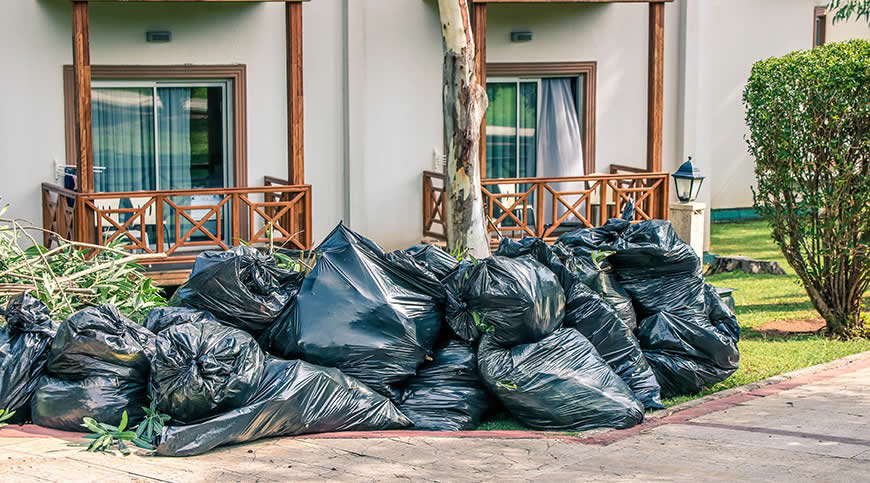
Introduction
This comprehensive guide delves into the various facets of rubbish removal, encompassing residential waste removals, commercial waste disposal, innovative rubbish removal techniques, and practical tips. Understanding and effectively managing waste is crucial for environmental sustainability, urban cleanliness, and public health.
I. Understanding Rubbish Removal
A. Definition and Importance
Rubbish removal refers to the process of collecting, transporting, processing, recycling, or disposing of waste materials. Its importance lies in maintaining cleanliness, ensuring environmental sustainability, and preventing health hazards.
B. Evolution of Rubbish Removal Practices
Historically, waste disposal methods have evolved from simple dumping to sophisticated recycling and waste-to-energy technologies. This evolution reflects the growing awareness of environmental impacts and the need for sustainable practices.
C. Current Trends in Waste Management
Modern trends in rubbish removal include the integration of smart technology, a focus on recycling and composting, and the development of sustainable waste-to-energy solutions.
II. Residential Waste Removals
A. Types of Residential Waste
Residential waste includes organic waste, recyclables, hazardous materials, and general refuse. Each type requires specific disposal methods.
B. Strategies for Effective Household Waste Management
Effective strategies include regular waste collection schedules, proper segregation at source, and community education programs on recycling.
C. Importance of Segregation and Recycling
Segregating waste facilitates recycling, reduces landfill usage, and conserves natural resources. It is a critical component of sustainable waste management.
D. Challenges in Residential Waste Removal
Challenges include ensuring compliance with segregation, managing the cost of waste disposal, and handling increased waste volumes during events or holidays.
III. Commercial Waste Removal
A. Nature of Commercial Waste
Commercial waste varies widely, from office paper waste to industrial by-products, each requiring different disposal methods.
B. Regulations Governing Commercial Waste Disposal
Businesses must comply with local and national regulations on waste disposal, which may include mandates for recycling and proper hazardous waste handling.
C. Best Practices in Commercial Waste Management
Best practices include conducting waste audits, implementing recycling programs, and investing in waste reduction technologies.
D. Innovations in Commercial Rubbish Removal
Innovations include automated waste sorting systems, advanced composting techniques, and partnerships for sustainable waste management.
IV. Rubbish Removal Canberra
A. Local Policies and Regulations
Canberra has specific regulations governing rubbish removal, emphasizing recycling and sustainable disposal methods.
B. Case Studies of Effective Waste Management
Several case studies in Canberra demonstrate successful community recycling programs and innovative waste-to-energy projects.
C. Role of Government and Private Entities
Both government and private sectors play vital roles in managing Canberra's waste, from policy-making to operational execution.
D. Community Participation in Canberra
Community participation is crucial for successful rubbish removal in Canberra, involving education, volunteer clean-up events, and feedback mechanisms.
V. Techniques in Rubbish Removal
A. Traditional vs. Modern Techniques
Traditional methods focused on landfill disposal, whereas modern techniques emphasize recycling, composting, and recovery.
B. Use of Technology in Waste Management
Technology plays a significant role in modern rubbish removal, including GPS tracking of waste trucks, smart bins, and waste sorting robots.
C. Eco-Friendly Disposal Methods
Eco-friendly methods include composting, recycling, and converting waste into renewable energy, reducing
Introduction
Rubbish removal, a critical aspect of modern living, impacts environmental health, urban aesthetics, and public well-being. This guide provides a comprehensive overview of the various components of waste management, covering residential waste removals, commercial waste disposal, advanced rubbish removal techniques, and practical tips for efficient waste handling.
In today's world, managing waste effectively is more than a mere logistical challenge; it represents a significant environmental and public health concern. With increasing urbanization and consumerism, the amount of waste generated globally has skyrocketed, making effective rubbish removal services essential. These services play a pivotal role in maintaining clean and healthy communities, reducing pollution, conserving resources through recycling and reuse, and ensuring sustainable development.
The landscape of rubbish removal has evolved dramatically over the years. From rudimentary methods of disposal to sophisticated waste management systems, the journey reflects a growing global consciousness about the environmental impacts of waste. This evolution is fueled by technological advancements, changing public attitudes towards waste, and stringent environmental regulations.
This guide will delve into the nuances of waste management, starting with residential waste removals, which involves the disposal of everyday waste generated in households. It will cover the challenges and strategies for managing household waste, emphasizing the importance of segregation, recycling, and responsible disposal.
Commercial waste removal, another significant aspect, deals with the waste generated by businesses, industries, and public institutions. Unlike residential waste, commercial waste can vary significantly in type and volume, requiring tailored strategies for efficient and eco-friendly disposal.
The guide will also explore specific case studies, such as rubbish removal in Canberra, to illustrate how local policies, community participation, and innovative practices can shape effective waste management in urban areas.
Lastly, the guide will discuss various rubbish removal techniques, comparing traditional and modern methods, and highlight the role of technology in transforming waste management. Tips for efficient rubbish removal, applicable to households, workplaces, and communities, will provide practical guidance for readers to contribute positively to this critical environmental issue.
In summary, this guide aims to enlighten and inspire better waste management practices, a necessity in our quest for sustainable living and environmental stewardship.
I. Understanding Rubbish Removal
A. Definition and Importance
Rubbish removal encompasses the collection, transportation, processing, recycling, or disposing of waste materials. It's a crucial element in maintaining public health, environmental sustainability, and urban cleanliness. Proper waste management helps prevent pollution, conserves natural resources through recycling, and reduces greenhouse gas emissions from landfills.
B. Evolution of Rubbish Removal Practices
The history of rubbish removal reflects humanity's growing awareness of its environmental impact. Initially, waste was simply discarded or burned. As cities grew, the need for organized waste management led to the development of garbage collection services and landfills. In recent decades, the focus has shifted towards recycling, composting, and waste-to-energy technologies, highlighting a more sustainable approach to waste management.
C. Current Trends in Waste Management
Modern trends in rubbish removal are characterized by the integration of technology and sustainability. Smart waste management systems, which use sensors and data analytics, enhance the efficiency of waste collection and sorting. There's a growing emphasis on circular economy principles, aiming to keep resources in use for as long as possible through recycling and repurposing. Furthermore, waste-to-energy solutions are becoming increasingly popular as a way to generate renewable energy from rubbish, thereby reducing landfill usage.
II. Residential Waste Removals
A. Types of Residential Waste
Residential waste typically includes organic waste (food scraps, garden waste), recyclables (paper, plastics, glass, metals), hazardous materials (batteries, electronics, chemicals), and general refuse. Each category requires different disposal methods to minimize environmental impact.
B. Strategies for Effective Household Waste Management
Key strategies for effective waste management at home involve regular waste collection schedules, proper segregation of waste at the source, and active participation in community recycling programs. Educating households about the importance of reducing waste, reusing items, and recycling is also crucial.
C. Importance of Segregation and Recycling
Segregation of waste at the source is fundamental for effective recycling and waste management. It ensures that recyclable and compostable materials are not contaminated, thereby increasing the efficiency of recycling processes and reducing the amount of waste sent to landfills. Recycling helps conserve natural resources, reduces environmental pollution, and supports the circular economy.
D. Challenges in Residential Waste Removal
The main challenges in residential waste removal include ensuring compliance with waste segregation guidelines, managing the cost of waste collection and disposal, and dealing with increased volumes of waste during holidays or special events. Additionally, the lack of awareness or convenience can hinder effective waste management practices at the household level.

III. Commercial Waste Removal
A. Nature of Commercial Waste
Commercial waste differs significantly from residential waste, both in volume and composition. It originates from various sources, including offices, retail outlets, manufacturing industries, and hospitality sectors. This waste encompasses a broad spectrum, from regular office paper and packaging materials to industrial by-products and hazardous substances.
B. Regulations Governing Commercial Waste Disposal
Commercial entities are subject to stringent waste management regulations, which vary by region and industry. These regulations often mandate specific disposal methods for different types of waste, impose recycling requirements, and stipulate proper handling of hazardous materials. Non-compliance can result in significant legal and financial repercussions.
C. Best Practices in Commercial Waste Management
To effectively manage commercial waste, businesses should adopt best practices such as conducting regular waste audits to understand and reduce waste generation. Implementing comprehensive recycling programs and engaging employees in waste reduction initiatives are also crucial. Many businesses are now investing in sustainable packaging and waste reduction technologies to minimize their environmental footprint.
D. Innovations in Commercial Rubbish Removal
Innovations in commercial waste management are driven by the need to increase efficiency, reduce costs, and minimize environmental impact. These include automated waste sorting systems, which use advanced sensors and machine learning to sort waste more accurately and efficiently. Other innovations involve partnerships between businesses and waste management companies to develop sustainable disposal and recycling solutions.
IV. Rubbish Removal Canberra
A. Local Policies and Regulations
In Canberra, local policies and regulations on rubbish removal are designed to promote sustainability and minimize environmental impact. These policies may include mandatory recycling programs, restrictions on certain types of waste, and incentives for reducing waste generation.
B. Case Studies of Effective Waste Management
Canberra has several success stories in waste management, demonstrating the effectiveness of local policies and community engagement. These case studies often highlight innovative approaches to recycling, waste reduction initiatives, and successful partnerships between the public and private sectors.
C. Role of Government and Private Entities
The government plays a pivotal role in setting and enforcing waste management policies in Canberra. However, the successful implementation of these policies often relies on the collaboration between government agencies, private waste management companies, and local communities.
D. Community Participation in Canberra
Community participation is integral to the success of rubbish removal initiatives in Canberra. This includes participation in recycling programs, adherence to waste disposal guidelines, and involvement in community clean-up events. Educating the community about the importance of proper waste management is also a key component of successful rubbish removal strategies in the region.
Conclusion
In conclusion, this comprehensive guide underscores the multifaceted nature of rubbish removal, highlighting its crucial role in modern society. From the individual household to large commercial entities, the effective management of waste is a shared responsibility that has significant implications for environmental sustainability, public health, and urban cleanliness. The evolution of waste management practices from rudimentary disposal to sophisticated, technology-driven systems reflects a growing global commitment to environmental stewardship and sustainability.
As we've seen, residential waste management focuses on segregation, recycling, and community participation, while commercial waste removal demands adherence to stringent regulations and innovative practices to handle diverse waste streams. The case study of Canberra illustrates the successful implementation of waste management policies when government, private entities, and communities work collaboratively.
The transition towards more sustainable waste management practices is evident in the adoption of eco-friendly disposal methods, the use of technology to enhance efficiency, and the increasing emphasis on the circular economy. These trends not only mitigate the environmental impact of waste but also present opportunities for renewable energy generation and resource conservation.
Ultimately, the effectiveness of rubbish removal services hinges on the collective efforts of individuals, businesses, and governments. By embracing responsible waste management practices, staying informed about the latest trends and techniques, and actively participating in waste reduction initiatives, we can contribute to a cleaner, healthier, and more sustainable world. This guide serves as a resource and inspiration for all stakeholders in the journey towards better waste management, a journey that is as much about protecting our environment as it is about safeguarding our future.

